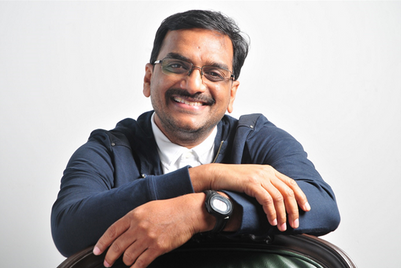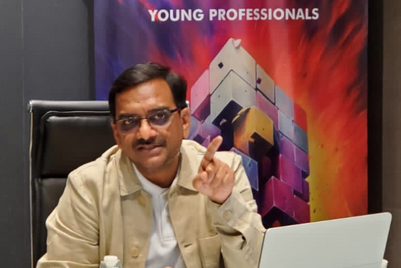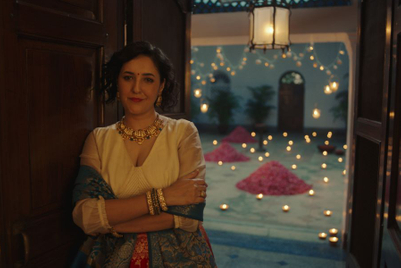
Conventional marketing wisdom had it that any product or service needed to have a competitive advantage over the rest in order to be successful. In the words of renowned business guru Michael Porter, who came up with the theory of competitive advantage, a brand or a business had a competitive advantage if it had a cost advantage or differentiation.
The logic worked perfectly well in an era where there weren’t too many brands or even categories, and mere product or service differentiations were enough to provide a clear advantage. And as categories were themselves constantly evolving, newer brands automatically had the benefit of being different.
In the modern, globalised economies however, the theory of competitive advantage has ceased to be a potent business force. Today, knowledge and technology are universally accessible and affordable ideas can be easily replicated.
Besides, the speed at which brands operate today and the ambitious global spread they cover, the innovator brand’s advantages can be matched or subsumed instantaneously. Product and service parity therefore spells the death knell of competitive advantage.
At the other end, we are seeing the surge of an audience who are a metaverse of instant connections, expectations, anticipations and gratifications. They virtually live in a world of brands and can WhatsApp their messages, Facebook their living, Google their quests, Tweet their thoughts, Amazon their wants, Snapchat their whims, Instagram their moments, Vine their personality, Uber their transit, Grofer their needs, Twitch their love of games, dashboard their fitness – and all while hanging in a Cloud. For them the difference between one brand and the other is as hard to tell apart as chunks of gravel.
What’s the solution then? ‘Distinctive Advantage’. Not ‘Competitive Advantage’.
Distinctive advantage is not something that is exclusively derived from point of difference. Rather, it comes from taking a point of view. A ‘Stand’.
A stand comes from what is true and inherent to the brand. It is purpose-driven and not market-driven. It is about the why and not the what. It is about advocates and not consumers. It is about communities and not communications. It is about what you buy into and not what you buy. It is about being distinctive and not competitive. It is about the next quarter century and not the next quarter.
High-growth companies understand that having a brand with a stand (a strong point of view/a sense of purpose) is more attractive to consumers, employees and suppliers. They know that people buy from businesses that are driven by higher motives than bottom line and shareholder value, putting a company at the heart of the consumer’s world, making products and services smoother, communications more efficient and adding a feel-good factor to everything it chooses to do.
In this new era of branding, the best ones will be stands with a purpose – built on a fundamental human truth, a universal good, a deep-seated conviction that outlasts campaigns, opens minds, deepens relationships, and grows share, of both profits and people.
A brand with a stand is emotion in motion, the reason for us to get up in the morning. Once you find it, no force is greater. It has the ability to tip the scales and shift from a business model that is self-serving to one that serves others, eventually making it indispensable. This is the new reality.
The principles of a ‘Stand’ are:
A Stand is a Clarion Call: With the ‘Power of 49’ mission during last elections, Tata Tea took a stand to awaken the nation to an issue that confronts 49 per cent of India’s population – the issue of women’s empowerment, by evangelising that no one can ignore the power of 49 per cent.
A Stand is a Beacon of Hope: With the ‘No Ullu Banaoing’ initiative, Idea Cellular took a stand to empower the common people by providing them access to mobile internet, so that they will not be made an ‘Ullu’ through various scams, as a result of being ill-informed.
A Stand is a Symbol of Transformation: With the ‘Remarriage’ idea, Tanishq took a stand to change the deep-rooted social stigma associated with remarriage with a fresh new perspective that also provided a contemporary take on traditional Indian weddings.
A Stand is a Tutor: With the ‘Respect for women’ drive, Havells took a stand to overturn age-old social norms that a woman’s prime responsibility was to ‘take care’ of her husband’s needs, by suggesting that, instead, she needed to be respected as she was not an appliance.
A Stand is a Belief: With the ‘Help a child reach 5’ movement, Lifebuoy took a stand on the issue of child mortality by empowering millions of people worldwide to help every child reach the age of five, by averting tragedies such as death by diarrhoea, with the simple act of washing hands with soap.
A Stand is a Storyteller: With the ‘Wish Chain’ narrative, Flipkart took a stand to be the universal icon of ‘Wish’ fulfilment, empathising with consumers in understanding the ‘why’ that precedes the ‘what’ of every wish, so that every wish in their heart finds its way into their hands.
Lastly, I’ll conclude by sharing an interesting thought experiment I conducted at IIM(A) some time ago.
I asked the students in my class to list out what they wanted to do when they passed out from their course. Almost all of them, as expected, went on to say that they wanted to land coveted jobs in prestigious companies and industries, with of course investment banking and e-Commerce being hot favourites.
I then asked them to list out what they wanted to do if a generous patron were to gift each of them a sum of Rs.100 crores to pursue their dream, with no obligation on their part. In response, most students revealed that they would set up various social projects and institutions that would benefit society at large.
This thought experiment convincingly established that at the first level, most people want to establish a competitive advantage. But what matters at a higher level is distinctive advantage. And that can only come out of a ‘Stand’ that shares a greater purpose. I told them that whatever they do with their lives, they should strive for a ‘Stand’ that gives them the cause of action and not just the course of action.
As Aristotle put it, where one’s distinctive talents intersect the needs of the world, there lies your vocation.
(The author is national planning director, Lowe Lintas. Examples from the author’s agency’s work have been published since they substantiate the perspective.)


.jpg&h=334&w=500&q=100&v=20250320&c=1)
.jpg&h=334&w=500&q=100&v=20250320&c=1)
.jpg&h=334&w=500&q=100&v=20250320&c=1)




.jpg&h=334&w=500&q=100&v=20250320&c=1)






.jpg&h=268&w=401&q=100&v=20250320&c=1)



